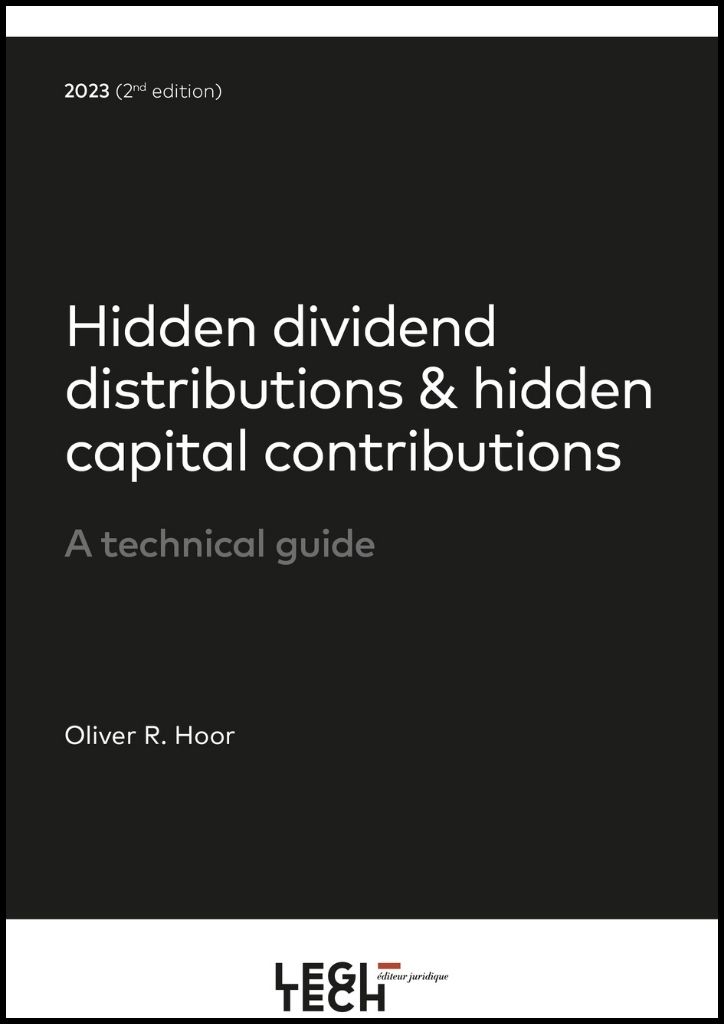Luxembourg companies have a legal personality that is separate
from that of their shareholder(s). Consequently, they may enter into agreements
with their shareholders as they do with third parties.
However, when the terms and conditions of those agreements
do not adhere to the arm’s length standard, tax adjustments may be required in
accordance with the concepts of hidden dividend distribution and hidden capital
contribution. Both concepts aim at a separation of the sphere of the company
(which is itself subject to corporate income tax on its worldwide income) from that
of its shareholders.
As such, the concepts of hidden dividend distribution
and hidden capital contribution are cornerstones of Luxembourg’s transfer pricing
rules. In addition, in the context of associated enterprises (in a group of
companies), tax adjustments might be required under Article 56 of the
Luxembourg Income Tax Law (“LITL”).
Hence, a clear distinction must be made between
agreements that adhere to the arm’s length principle and agreements that,
motivated by the shareholding relationship, shift advantages from the company
to the shareholder or vice versa. Therefore, each contractual
relationship between a company and its shareholder(s) must be considered.
Luxembourg tax law
does not provide for exhaustive definitions of hidden dividend distributions
and hidden capital contributions. Both concepts have their origins in case law
of the German Reich Tax Court (Reichsfinanzhof)
and have been carefully extended and refined through the years by the German
Federal Tax Court (Bundesfinanzhof). Since the publication of the first edition of this book back in 2011,
the Luxembourg Courts had to decide in numerous cases involving both concepts.
This book offers a one-of-a-kind, practical insight into the tax
treatment of hidden dividend distributions, hidden capital contributions and
triangular cases. Charts, case studies and checklists aid the reader in
identifying and assessing the various cases in which hidden dividend distributions
and hidden capital contributions may arise. A new chapter with practical case
studies considers situations that may occur in the context of multinational
groups, Luxembourg alternative funds and individual shareholders.
Reading this thorough guide is indispensable for an in-depth
understanding of the concepts of hidden dividend distribution and hidden
capital contribution. Tax advisers, practitioners and tax students should gain
substantially from the insights provided in this book.
Oliver R. Hoor is a Partner in the International and Corporate Tax department of ATOZ.
A tax professional since 2003, Oliver has experience in Luxembourg and international taxation with a focus on alternative Investments (private equity, real estate, sovereign wealth funds, hedge funds), mergers & acquisitions and multinational groups. Oliver advises clients on all direct tax aspects regarding deal structuring, maintenance, reorganisations and exit planning.
He is Head of Transfer Pricing and the German Desk. Oliver is further a member of the tax working groups of the Association of the Luxembourg Fund Industry (ALFI) and the Luxembourg Private Equity Association (LPEA).
Oliver is the author of more than 300 articles and books on Luxembourg and international taxation including Transfer Pricing and related documentation requirements, the OECD Base Erosion and Profit Shifting (“BEPS”) Project and the EU Anti-Tax Avoidance Directives (ATAD 1 & 2), reporting obligations of tax intermediaries (DAC 6), current initiatives of the EU Commission in the field of direct taxation (ATAD 3, BEFIT, DEBRA, SAFE, DAC 8, …), the OECD Model Tax Convention and Tax Treaties, EU Law and the State Aid investigations of the EU Commission. He is also a regular speaker at conferences as well as a lecturer with Legitech and ILA.
Oliver is qualified as a Chartered Accountant in Luxembourg (“Expert-Comptable”) as well as a certified German tax adviser (“Steuerberater”). He holds a post-graduate degree in Luxembourg Tax and a degree in Business Administration with a major in Tax from the University of Applied Sciences of Trier (Germany).
I. Introduction
1. Overview
2. The concept of hidden dividend distribution
3. The concept of hidden Capital contribution
4. Article 56 of the LITL (Associated enterprises)
5. Hierarchy of norms
II. Hidden dividend distributions
1. Overview
2. Characteristics of hidden dividend distributions
3. Tax treatment of hidden dividend distributions
4. Cross-border situations
5. Case studies
III. Hidden capital contributions
1. Overview
2. Characteristics of hidden capital contributions
3. Luxembourg tax treatment of hidden capital contributions
4. Cross-border situations
5. Case studies
IV. Triangular Cases
1. Overview
2. Chain transactions
3. Transactions involving sister companies
4. Transactions involving related parties of individual shareholders
V. Practical case studies
1. Overview
2. The multinational group
3. The real estate fund
4. The finance company
5. A wealthy family
